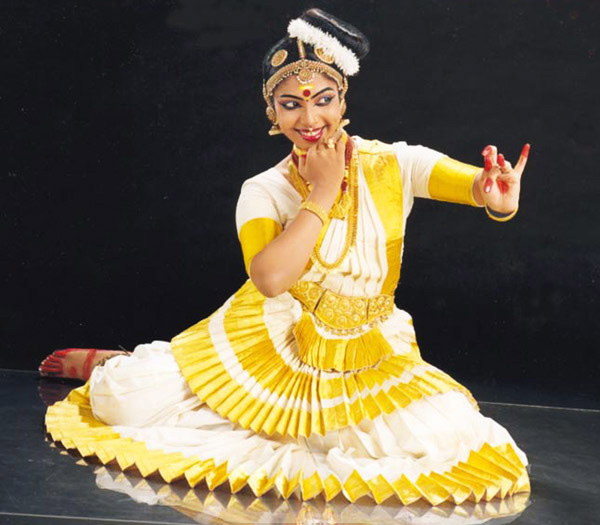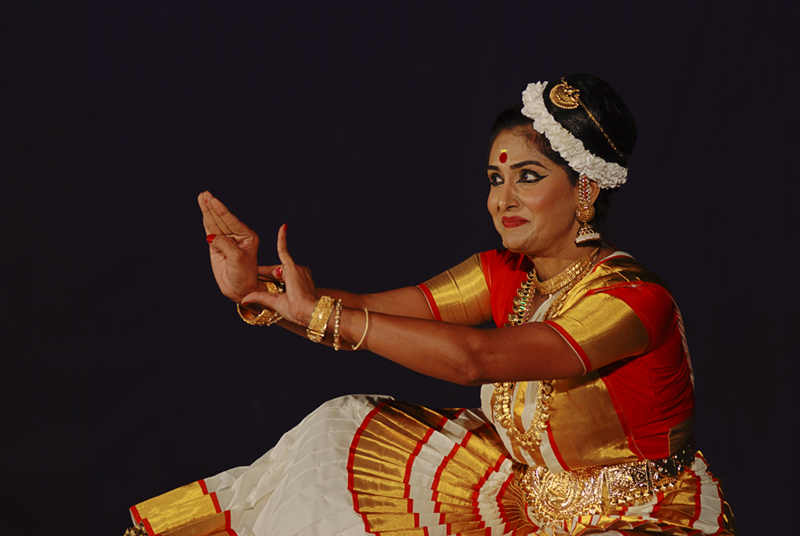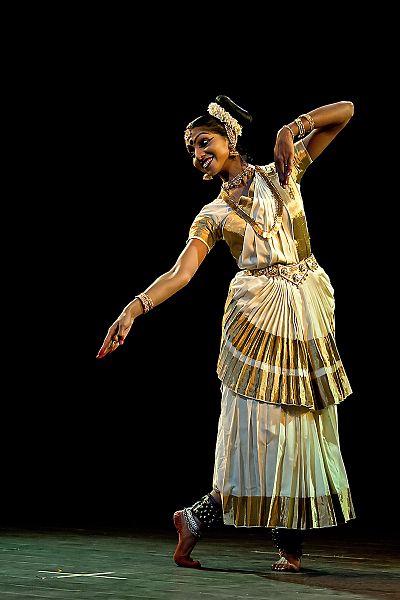
Mohiniyattam
Mohiniyattam, also spelt as Mohiniattam, is the traditional dance form of Kerala performed exclusively by women. It is one of the ancient Indian classical dance forms recognized by Sangeet Natak Akademi. The dance is characterized by suggestive hand movements (mudras), rhythmic footwork and lyrical music. Mohiniyattam is meant to be performed as a solo recital and is a gentle, graceful dance depicting the theme of shringar or love. Mohiniyattam is believed to have originated in the 16th century but flourished from the 19th century under the patronage of the King of Travancore Swathi Thirunal. It is one of India’s most loved dance forms even today.
Origin and History
It is believed that this dance form originated in the 16th century, and took off eventually in the 19th century under the reign of Swathi Thirunal, who was the king of the state of Travancore, which is the Southern part of Kerala. Under the sovereignty of Swati Thirunal, this dance form achieved great reputation, and the king left no stone unturned to promote the study and practice of this dance form. In addition to that, a popular poet from Kerala, Vallathol played a pivotal role in popularizing this dance in the early 20th century as well. The word ‘Mohiniyattam’ when broken down means exactly what the dance portrays. The word ‘Mohini’ means an enchantress or a woman who attracts the onlookers with her charm, and ‘aattam’ means ‘graceful and seductive body movements’.
There is an interesting legend behind the true formation or concept of this dance, which is directly related to Hindu mythology and in particular Lord Vishnu, who disguised himself as ‘mohini’ or in other words the enchantress and did this particular dance to lure the demons away, and to save Lord Shiva.
Style
Gracefulness and beauty of a woman are the core components that make up the Mohiniyattam dance. Over the centuries, Indian women have been portrayed as the embodiment of sensuality and poise, and the Mohiniyattam dance celebrates the basic essence of true Indian femininity. The overall costume, makeup and jewelry exhibit the loveliness of an Indian woman.
The attire used in this dance form is simple and does not appear complicated, yet it is ethereal in its appeal with a touch of opulence and old world charm. There is only one particular saree used in this dance and that is the famous and much sought after Kerala Kasavu saree (which is a white saree along with a rich golden brocade border). The Kerala Kasavu saree is one of the finest sarees found in Kerala and the basic blend of colors are the creamy white along with a rich golden border. Simple, yet elegant is well showcased through this saree which makes the dancer look divine and almost dreamlike.
Influences
Throughout Indian cinema, several actresses have used this dance form in classical numbers that involve dramatic face and body expressions. Along with other popular Indian dance forms like Kathak and Bharatnatyam, Mohiniyattam has also gained a prominent place in institutions that promote Indian dance and music. Moreover, the Kerala Kasavu saree used in this dance has become extremely popular with women all over India and abroad. Indian actresses like Aishwarya Rai and Rani Mukherjee have donned these sarees for special red carpet events and have given it a worldwide recognition.
Global influence
For the last so many years, anything that has spelt ‘Indian’ has always become popular amongst the global masses, and dance is one of the top most influences. Several dance instructors have uploaded informative and useful videos online to promote the Mohiniyattam dance, and several people instruct dance classes for the same. Countries like U.S.A, U.K, and some parts of Europe have also gotten familiar with this dance style and have always been in awe of the mesmerizing movements that portray Indian culture with pride and a sense of prosperity. The Gold jewellery used in this dance is glamorous and ornate, which has always played as an inspiration for jewellery designers across the globe.
Interesting Facts and Comparisons
- The makeup used for this dance is dramatic yet elegant, which involves red lips, dark ‘kohled’ eyes and flowers used to adorn the hair.
- The language used during the dance is a beautiful and soft blend of Sanskrit and Malayalam.
- The dancers only use Gold jewellery since it is a sign of prosperity and beauty.
- The flowers used for the hair are always Jasmine flowers.
- Initially this dance form was only performed in the temples of Kerala as it was considered a form of tribute to the Indian gods, and in particular Lord Vishnu.
- The Kerala Kasavu saree is the only saree used for this dance.
References
Categories: Cultural Connections, Indian Performing Arts


